
Once, Rajshahi’s sweltering summers were made worse by a familiar problem on the Asian subcontinent: windows would have to be shut, not because of the wind or monsoon, but because of the smog.
Dust blown up from dry riverbeds, fields and roads, and choking smog from ranks of brick kilns on the edge of town helped to secure the place a spot in the top tier of the world’s most polluted cities.
Then suddenly Rajshahi, in Bangladesh, hit a turning point so dramatic that it earned a spot in the record books: last year, according to UN data, the town did more than any other worldwide to rid itself of air particles so harmful to human health.
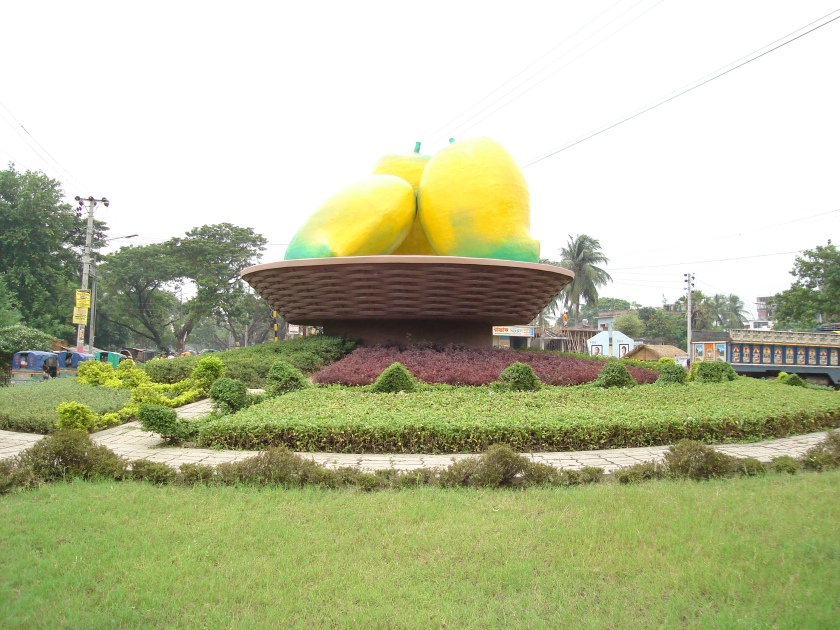
So your next destination should be Rajshahi. The city is clean and green. The city is beautiful with it’s surrounding river Padma. Besides this there are lots of attractions with in Rajshahi division. Here is list of some top attractions.
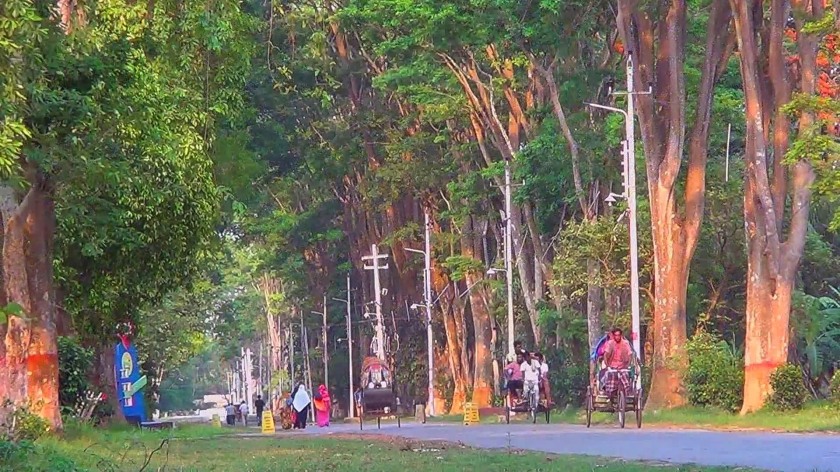
University of Rajshahi:
This is one of the largest Universities in the country and the largest in the northern region of Bangladesh. After its foundation on July 6, 1953, the university has passed 62 years providing higher education and research. The university is located at the green premises of Motihar which is very close to the mighty river Padma and seven km. east from the Rajshahi City Center.
Kusumba mosque:
Kusumba mosque is named after the village Kusumba. It was built during the period of Afgan rule in Bangladesh by a high-ranking official named Sulaiman. It was built under one of the last Suri rulers. His name was Ghiyasuddin Bahadur Shah.Although the mosque was built under the suri rule, the architectural pattern was not influenced by the earlier Suri architecture of North India. It was constructed with a Bengal style. At the eastern central entrance, inscription mentioned the time period of construction of the mosque to 966 AH (1558-59 AD).
Somapura Mahavira, ( Sanskrit: “Great Monastery”)
8th-century Buddhist monastery in the village of Paharpur, near Rajshahi, northwestern Bangladesh. Covering almost 27 acres (11 hectares) of land, it is one of the largest monasteries south of the Himalayas. Through the 17th century it was an important intellectual centre that was occupied alternately by Buddhists, Jains, and Hindus. Clues to its various inhabitants are found on artwork contained within the Somapura Mahavira’s thick outer walls.
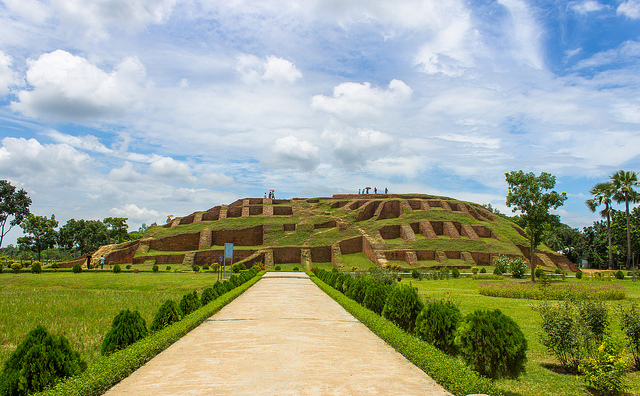
Mahasthangarh:
(Bengali: মহাস্থানগড় Môhasthangôṛ) is one of the earliest urban archaeological sites so far discovered inBangladesh. The village Mahasthan in Shibganj thana of Bogra District contains the remains of an ancient city which was called Pundranagara or Paundravardhanapura in the territory of Pundravardhana. A limestone slab bearing six lines in Prakrit inBrahmi script, discovered in 1931, dates Mahasthangarh to at least the 3rd century BC. The fortified area was in use till the 18th century AD.
Kantanagar Temple:
Commonly known as Kantaji Temple or Kantajew Temple (Bengali: কান্তজীউ মন্দির) at Kantanagar, is a late-medieval Hindu temple in Dinajpur, Bangladesh. The Kantajew Temple is one of the most magnificent religious edifices belonging to the 18th century. The temple belongs to the popular Hindu Kanta or Krishna and this is most popular with the Radha-Krishna cult (assemble of memorable love) in Bengal. This beautiful temple is dedicated to Krishna and his wife Rukmini. Built by Maharaja Pran Nath, its construction started in 1704 CE and ended in the reign of his son Raja Ramnath 1722 CE, during the reign of his son Maharaja Ramnath. It boasts one of the greatest examples on terracotta architecture in Bangladesh and once had nine spires, but all were destroyed in an earthquake that took place in 1897.
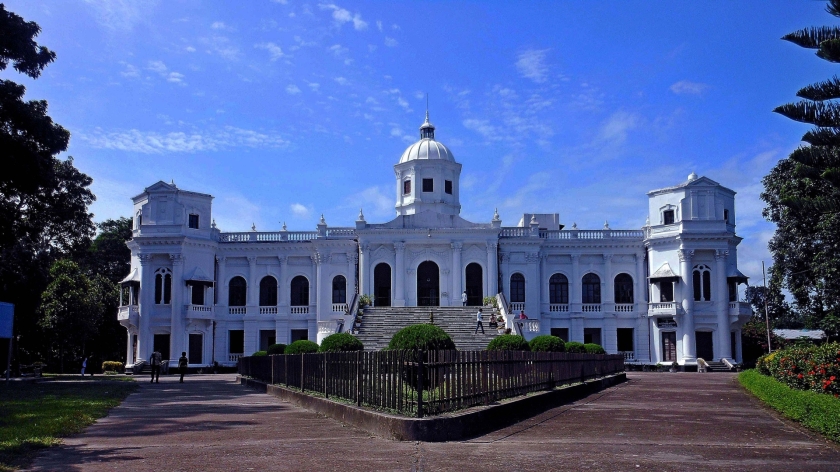
Tajhat Palace:
Tajhat Rajbari, is a historic palace of Bangladesh, located in Tajhat, Rangpur. This palace now has been turned into amuseum. Tajhat Palace is situated three km. south-east of the city of Rangpur, on the outskirts of town. The palace was built by Maharaja Kumar Gopal Lal Roy in the beginning of the 20th century. He was a descendent of a Hindu Kayasthawho emigrated from the Punjab. It is believed that from the conspicuous appearance of his Taj or jeweled crown, his estate derived the name of Tajhat.
Natore Rajbari:
(This is also known as Pagla Raja’s Palace, Natore Palace) was a prominent royal palace in Natore, Bangladesh.[1] It was the residence and seat of the Rajshahi Raj family of zamindars. Famous queen Rani Bhabani lived here and after the death of her husband, expanded both the estate and the palace. Natore Zamindars was one of the largest Zamindaris of Bengal. The originators of this Zamindari were Ramjivan and Raghunandan both sons of Kamdev. Ramjivan’s daughter-in-law was Rani Bhawani(1716-1795), a legendary name in Bengal politics in the 18th century and an endearing personality in everyhome of the country due to her boundless generosity and public spirit. After becoming Zamindar Ramjivan built his Rajbari at Natore occupying a huge area of 50.42 acres of land and it is enclosed within two rings of defensive moats-one within the other.
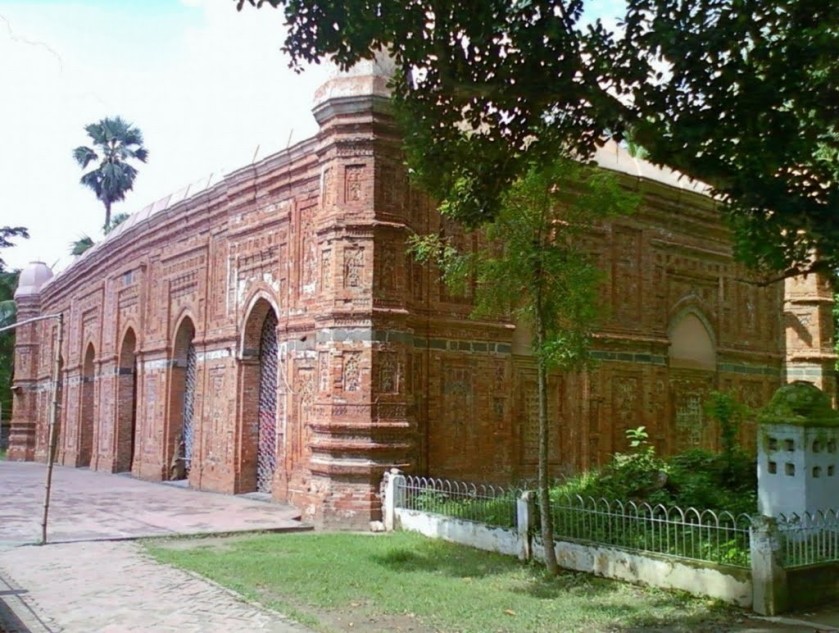
Bagha Mosque:
This magnificent mosque was built in 1523 A.D. by the Sultan of Bengal Nasiruddin Nasrat Shah. Ornamented with beautiful terracotta, Bagha Mosque is one of the most beautiful mosques in current day’s Bangladesh. It is located at Bagha, 25 miles southeast of Rajshahi in Bangladesh. It is a great historical place in Bangladesh. It has wonderful architectural style.
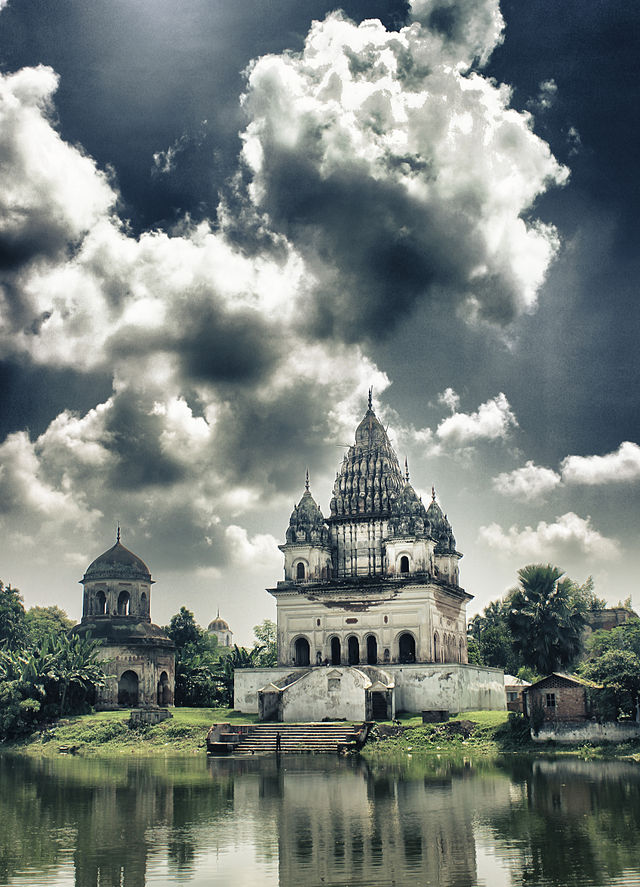
Puthia Temple Complex:
The Puthia Temple Complex consists of a cluster of notable old Hindu temples in Puthia Upazila, Rajshahi District,Bangladesh. Located 23 km to the east of Rajshahi city, it has the largest number of historic temples in Bangladesh. The temples were built by Hindu Zamindars Rajas of the Puthia Raj family who were noted philanthropists of Rajshahi. The temples have been built in terracotta in a variety of styles combining the typical Jor-bangla architecture with other influences. The Rajbari or Palace of the Raja of Puthia and the Dol Mancha are part of the complex. The temples are laid out around a lake with a sprawling lawn.
Ramsagar National Park:
It is located in the Dinajpur District in the north-west of Bangladesh, the Ramsagar National Park spreads out over an area of about sixty square kilometers, with a vast man-made water reservoir as its focal point. The area around the Ramsagar Lake is a popular picnic spot for both locals and tourists, and the abundant flora and fauna in the area enhances the peaceful sensation of being close to nature.
The water reservoir was built between 1750 and 1755 to provide local inhabitants with safe drinking water. Its construction was initiated by Raja Ram Nath and some 1.5 million laborers worked on the project. The reservoir was named in his honor.
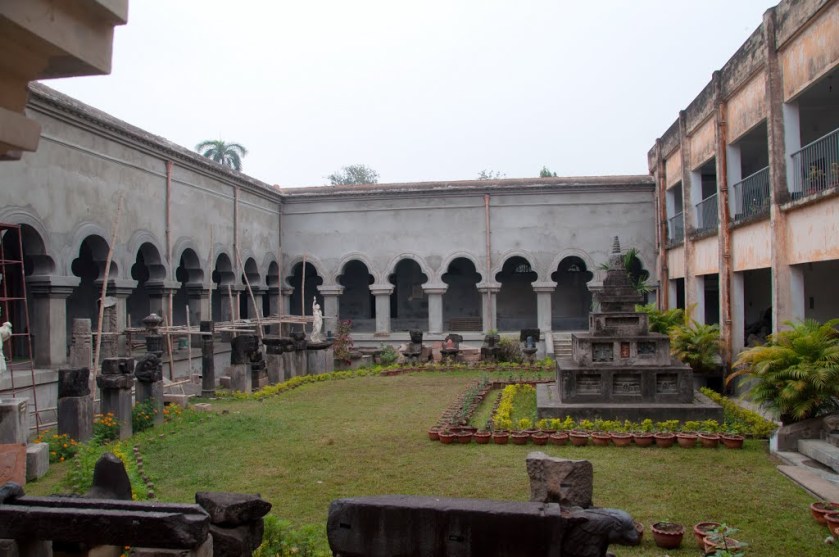
Varendra Research Museum:
Varendra Museum (Bengali: বরেন্দ্র জাদুঘর) is a museum, research center and popular visitor attraction located at the heart of Rajshahitown and maintained by Rajshahi University in Bangladesh. It is considered the oldest museum in Bangladesh. Varendra museum was the first museum to be established in East Bengal in 1910. The museum started out as the collection for Varendra Anushandan Samiti or Varendra Investigation Society got its current name in 1919. The Rajahs of Rajshahi and Natore, notably prince Sharat Kumar Ray, donated their personal collections to Varendra Museum. Varendra refers to an ancient janapada roughly corresponding to modern northern Bangladesh.
Content: Wikipedia, Photos: Google












